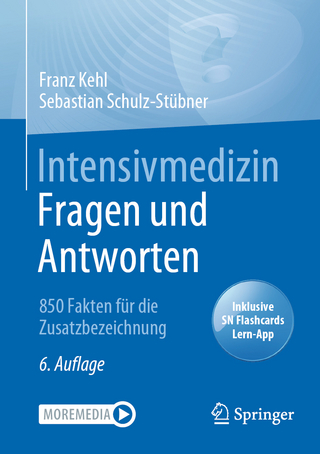
Multisensory Control of Posture
Springer-Verlag New York Inc.
978-1-4613-5791-9 (ISBN)
1. Multisensory Control of Movements at Spinal Levels and Its Supraspinal Modulation.- 2. Involvement of Deep Cerebellar Nuclei in Attentive and Orienting Motor Responses.- 3. Adaptability of Adult Mammalian Motoneurons to New Motor Tasks.- 4. Type I Medial Vestibular Neurons during Alertness, following Adaptation, and during REM Sleep Episodes in the Head-Fixed Guinea-Pig.- 5. Adaptive Changes in Gain of the Vestibulospinal Reflex during Sustained Neck-Vestibular Stimulation.- 6. Neural Integration of Visual Information and Direction of Gravity in Prestriate Cortex of the Alert Monkey.- 7. Primate Vestibular Cortices and Spatial Orientation.- 8. Proprioceptive and Cutaneous Feedback in the Modulation of Cortical Output in Man.- 9. The Role of Proprioceptive and Vestibular Inputs in Triggering Human Balance Corrections.- 10. Characteristics of Head and Neck Stabilization in Two Planes of Motion.- 11. Principal Component Analysis of Axial Synergies during Upper Trunk Forward Bending in Human.- 12. Do Equilibrium Constraints Determine the Center of Mass Position during Movement?.- 13. Selection of Postural Adjustments in Sitting Infants: Effect of Maturation and Training.- 14. Development of Bilateral Limb Coordination in Humans.- 15. Volitional versus Reflex Control in Ocular Pursuit.- 16. Classification of Visual Processes for the Control of Posture and Locomotion.- 17. Differential Influence of a Visual Flow Pattern on EMG-Activity of Antagonistic Leg Muscles during Unstable Stance.- 18. The Formation of the Visual and the Postural Vertical.- 19. Visual-Vestibular Interaction for Human Ego-Motion Perception.- 20. Modification of the Galvanic Sway Response by Visual Conditions.- 21. Interaction of Optokinetic Reflex and Vestibulo-Ocular Reflex during Active and PassiveHead Rotation.- 22. Inertial Representation of Visual and Vestibular Self-Motion Signals.- 23. The Visual Guidance of Ballistic Arm Movements.- 24. Self-Controlled Reproduction of Passive Linear Displacement: Distance, Duration, and Velocity.- 25. Adjustment of the Internal Sensorimotor Model in the Course of Adaptation to a Sustained Visuomotor Conflict.- 26. Fingertip Touch as an Orientation Reference for Human Postural Control.- 27. Effects of Neck Muscle Vibration and Caloric Vestibular Stimulation on the Perception of Subjective ‘Straight Ahead’ in Man.- 28. Body Leaning Induced by Galvanic Vestibular and Vibratory Leg Muscle Stimulation.- 29. Vestibular-Somatosensory Interactions for Human Posture.- 30. Eye-Head Coordination before and after Canal Plugging in Monkey.- 31. Subjectively Perceived Ego-Motion and Its Relation to Centrifuge Induced Motion Sickness.- 32. Angular Velocity Estimation under Varying Linear Acceleration.- 33. Evidence for Somatosensory Components in Movement-Evoked Brain Potentials.- 34. Control of Human Head Posture.- 35. Simple Model of Sensory Interaction in Human Postural Control.- 36. Efforts to Quantify Adaptation in Modeling of Postural Control.- 37. Central Vestibular Disorders of the Roll Plane.- 38. Posture Maintenance following Sensory Stimulation in Subjects with Normal and Defective Vestibular Function.- 39. Long-Term Adaptation of Dynamic Visual Acuity to Telescopic Spectacles by Low Vision Patients.- 40. Subjective Postural and Visual Vertical in Spasmodic Torticollis.- 41. Smooth Pursuit Eye Movements in Patients with Impaired Visual Motion Perception.- 42. Inertial Coriolis Force Perturbations of Arm and Head Movements Reveal Common, Non-vestibular Mechanisms.- 43. Influence of Short-and Long-Term Exposure to RealMicrogravity on Kinematics of Pointing Arm Movements.- 44. Is Postural Stability Changed by Aviation Practice?.- 45. Effects of Orbital Space Flight on Vestibular Reflexes and Perception.
| Zusatzinfo | XI, 358 p. |
|---|---|
| Verlagsort | New York, NY |
| Sprache | englisch |
| Maße | 178 x 254 mm |
| Themenwelt | Medizinische Fachgebiete ► Chirurgie ► Neurochirurgie |
| Medizin / Pharmazie ► Medizinische Fachgebiete ► Neurologie | |
| Naturwissenschaften ► Biologie ► Zoologie | |
| Naturwissenschaften ► Physik / Astronomie ► Angewandte Physik | |
| ISBN-10 | 1-4613-5791-8 / 1461357918 |
| ISBN-13 | 978-1-4613-5791-9 / 9781461357919 |
| Zustand | Neuware |
| Haben Sie eine Frage zum Produkt? |
aus dem Bereich


